H2o world first precast rammed earth project inspires Dubai masterpiece 20 years later
In 2002 Hillview Quarries Victoria, a granite quarry and producers of granitic sand, required an elevated solution to their new gatehouse building utilising their own products. H2o and internationally known rammed earth guru Rick Lindsay, produced the worlds first precast rammed earth elevated panels.
In Dubai 20 years later the Hillview experience inspired Rick and architects Qualalou + Choi to design the award winning multi level Morocco Pavilion Expo 2020. This utilises similar prefabricated rammed earth panels made from local sand, lightly reinforced and concrete backed.
Utilising the same specialised precast rammed earth technology, Rick Lindsay is now cladding thirty storey buildings in Ghana and UAE.
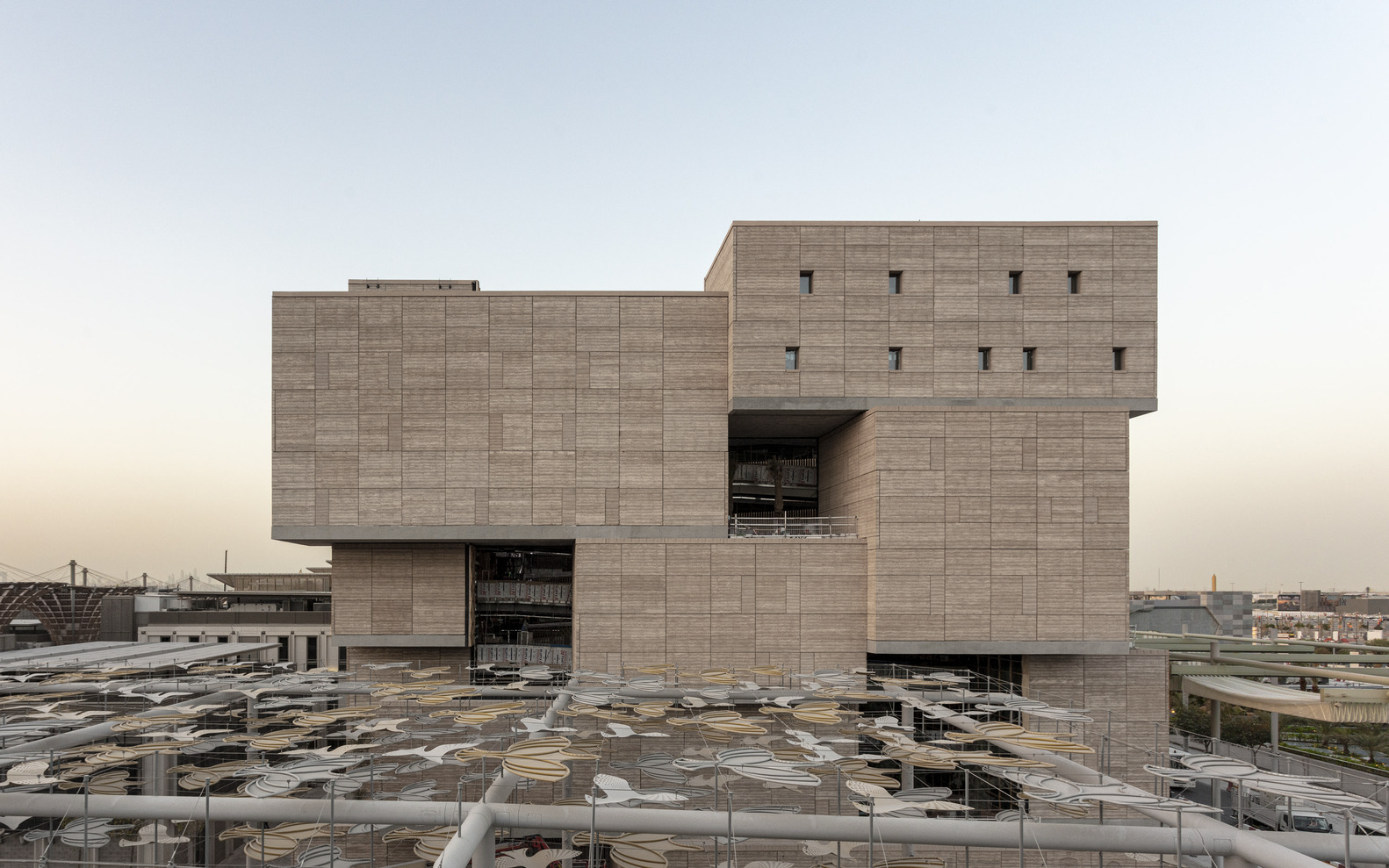
Image: Morocco Pavilion Expo 2020 Dubai / Oualalou+Choi
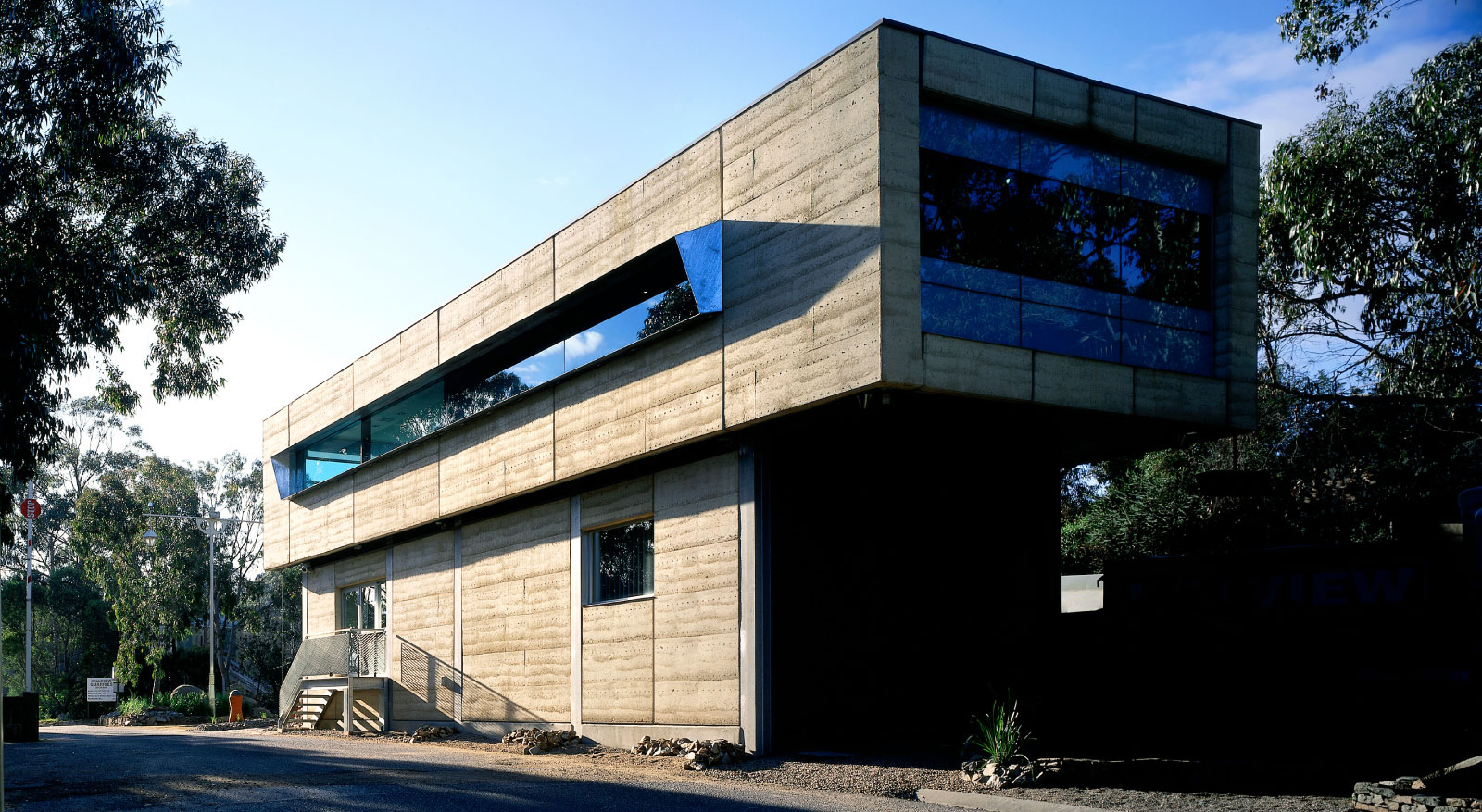
Image: Hillview Quarry Gatehouse 2002 / H2o Architects
Immense Campus Changes Afoot
The worlds sprawling University campuses with their extensive built infrastructure are under pressure. Urgent pressure.
Largely created in the 1990’s and 2000’s campuses both large and small are now suffering post Covid.
The world wide Covid induced need for staff and students of all disciplines and experiences to work and learn from home – at least part time, has changed the way we work and study forever.
Economists and social anthropologists have suggested that it will be seen as one of the defining ‘Black Swan’ moments in human history.
And so, campuses across the globe are having to make wholesale adjustments to their built fabric with literally hectares of accommodation now surplus to core requirements.
H2o are fortunate to have been engaged to critically assist in managing this transition, studying the accommodation impact of changed staffing, research and teaching requirements on campuses across Australia.
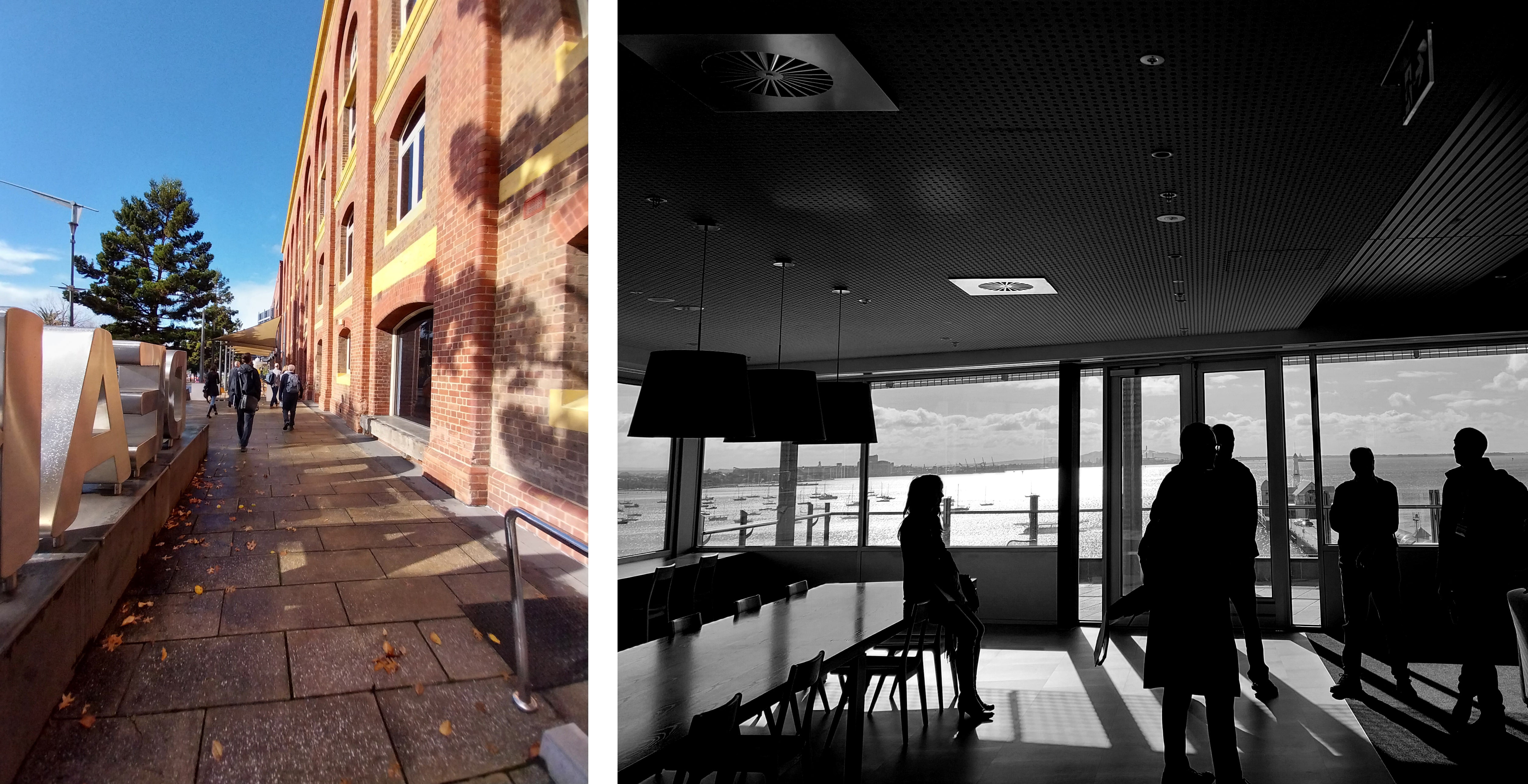
Exploring the impact of design on youth justice facilities with H2o’s Matt Dwyer
Congratulations to H2o Architects’ architectural graduate Matt Dwyer, who has received a prestigious Churchill Fellowship to further his architectural research into the design of therapeutic and relationship-based youth custodial facilities.
The fellowship furthers Matt’s research project, Local Time, conducted in partnership with mental health and juvenile justice researcher Dr Sanne Oostermeijer from The University of Melbourne. The project offers a new Design Standard for evidence-based designs to improve outcomes for young people in custody, as well as youth justice staff, and the broader community.
Local Time won the Victorian Design Challenge 2018, demonstrating how design can be used to help vulnerable youth in society. The project links the planning and design of a facility with a strengths-focused justice system for young people, which embraces access to mental health services, education, family, mobility and employment options.
Matt’s research seeks to understand best-practice facilities from different jurisdictions to advocate for reform in Australia. Examining facilities in Norway, Spain and the Netherlands, the research explores the design of these facilities through four concepts:
1 small-scale facilities;
2 local facilities that encourage meaningful prosocial connection with the community;
3 facilities that promote positive relationships with staff and facilitate individually-tailored security responses; and
4 therapeutic and homelike environments.
Matt and Sanne’s latest research was published in April, and analyses the views of youth custodial staff on design around relational security approaches.
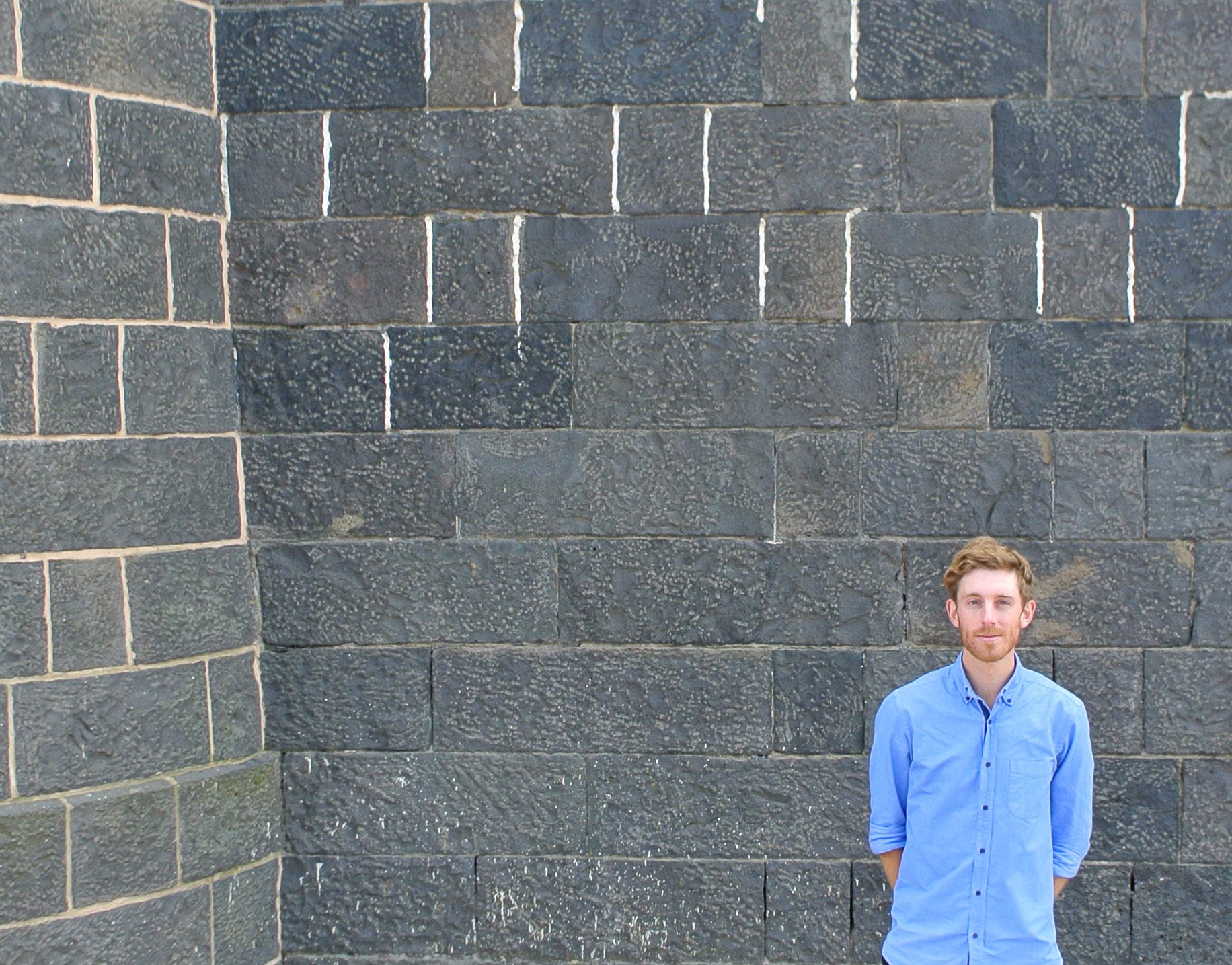
We are hiring!
H2o Architects have a full-time student position available.
Main responsibilities:
-Work directly with our design directors to assist in various educational and housing projects
-Report to the office manager to support daily office activities
-Liaise with the marketing department on social media
Requirements:
-Holds an undergraduate degree in architecture
-Excellent verbal and written communication skills
-Proficient in Autocad, Photoshop, Indesign, Rhino, Vray and Microsoft Office
-Previous documentation experience is a strong plus
-Revit, Archicad and Enscape are a plus
-Flexible working hours can be arranged with the right candidate(2 days/week minimum)
-Full work rights
Qualified candidates should submit, by email, a resume, folio and cover letter to Studio@h2oarchitects.com.au Files should be in PDF format.

Construction commenced: The Friends’ School Redevelopment Stage 2
With the first stage nearing completion, H2o Architects is excited to see the second stage of our development for The Friends’ School in Hobart underway.
Designed by H2o Architects with Bence Mulcahy, Stage 2 includes the conversion of the existing WN Oats Sports Hall into a two-level learning centre at the heart of the campus.
The multi-stage development follows the initial masterplan undertaken in 2016 by H2o with Bence Mulcahy for the school’s Commercial Road and Argyle Street campuses.
Almost complete, the first stage sits at the centre of a new recreational hub, and acts as an interconnected web joining previously disparate buildings and spaces across a number of levels.
Currently under construction by Fairbrother builders, Stage 2 is due for completion by the start of the 2023 school year.
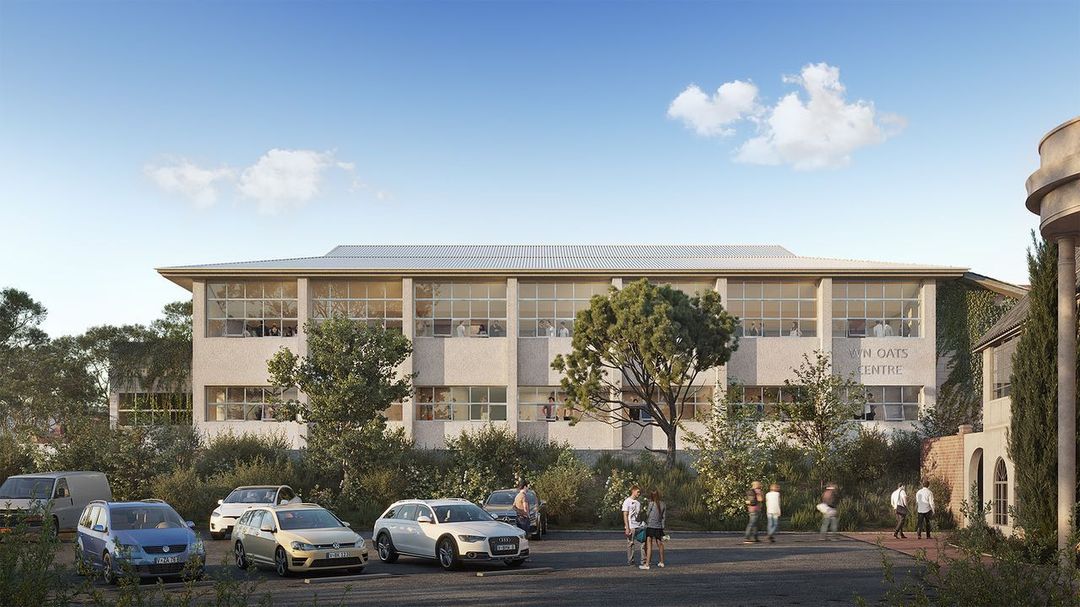
Pictured: Stage 2 of the Friends’ School redevelopment. Founded in 1887, the school is the first co-educational private school in Australia, and with 1300 students, it’s also the largest Quaker school in the world. Render by CUUB Studio.
New cutting-edge labs for La Trobe University
Our latest project for La Trobe enhances the university’s reputation for world-class rural health education, providing new nursing labs, together with wet labs for biomedical science teaching and research.
Announced this week, the university has received Federal Government funding towards the delivery of state-of-the-art labs for health and science students in Mildura. The new facilities will help address the increasing demand for local nursing and healthcare professionals, and will allow the university to introduce a new Bachelor of Biomedical Science from 2024.
The labs are designed to provide nursing students with an environment that closely resembles a hospital or other clinical setting, “nursing students will have the opportunity to practice the skills and techniques they will need in a real-world situation, while being safely supported by skilled teaching staff”, Dean of La Trobe Rural Health School Professor Jane Mills.
Our studio has delivered more than 50 projects for the science, education and technology sectors, including the recently completed Science Research Facility at UTS and the new Flinders University Biodiversity Facility. Construction of La Trobe’s new facilities is due to begin later this year.
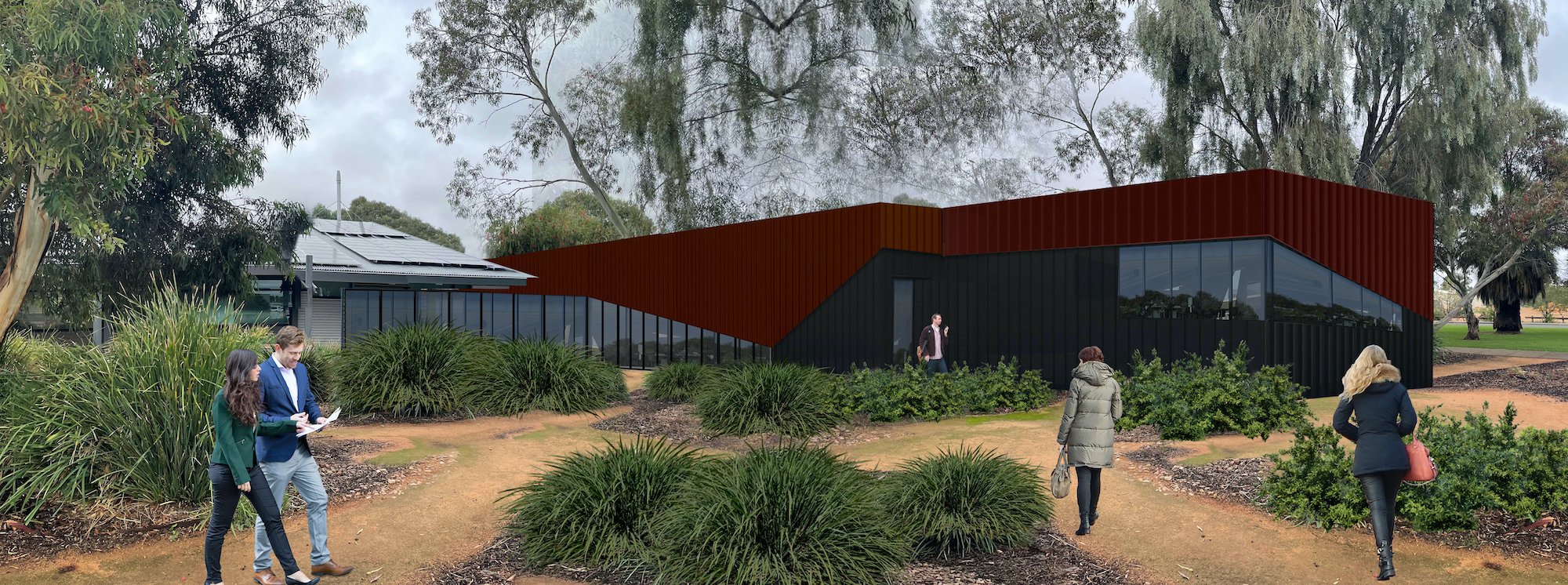
New cutting-edge labs in Mildura: the facility will help bring the university closer to realising their ambition to establish a new rural medical training pathway in the Mallee region.
Under construction in 2022
Our studio has several exciting projects nearing completion, including the first stage of The Friends’ School Redevelopment in Hobart and the major redevelopment of the Yarra Ranges Civic Centre in Lilydale. Also currently under construction for HousingFirst, are the Little Grey St and Halycon Brighton affordable housing developments.
Completion of The Friends’ School’s new Sports Centre will pave the way for the innovative second stage of the redevelopment; the conversion of the existing WN Oats Sports Hall into a two-level learning centre at the heart of the campus. Also in Tasmania, we’re pleased to be revisiting the historic Hobart Real Tennis Club for several upgrades to their existing playing and club facilities.
In the final stages of construction is our extensive refurbishment and extension of the Yarra Ranges Council Anderson Street offices into a flexible multi-purpose centre. Located within Lilydale’s main street, our design enhances underutilised public space to create a dynamic new civic hub.
In St Kilda, the Little Grey Street development is well underway.
The project transforms an existing rooming house into fully self-contained units, creating suitable long-term accommodation for women over 55 years old at risk of homelessness. Our design allows for ageing-in-place, as well as communal indoor and outdoor spaces to encourage socialisation and interaction. Naturally ventilated without air conditioning, the design also achieves 100% adaptive reuse of the existing base building.
Also currently under construction is our latest project for Swinburne University, a new multi-use cafe at the Hawthorn campus featuring floor to ceiling glazing, recycled timber floors and ceiling, and a fully operational commercial kitchen.
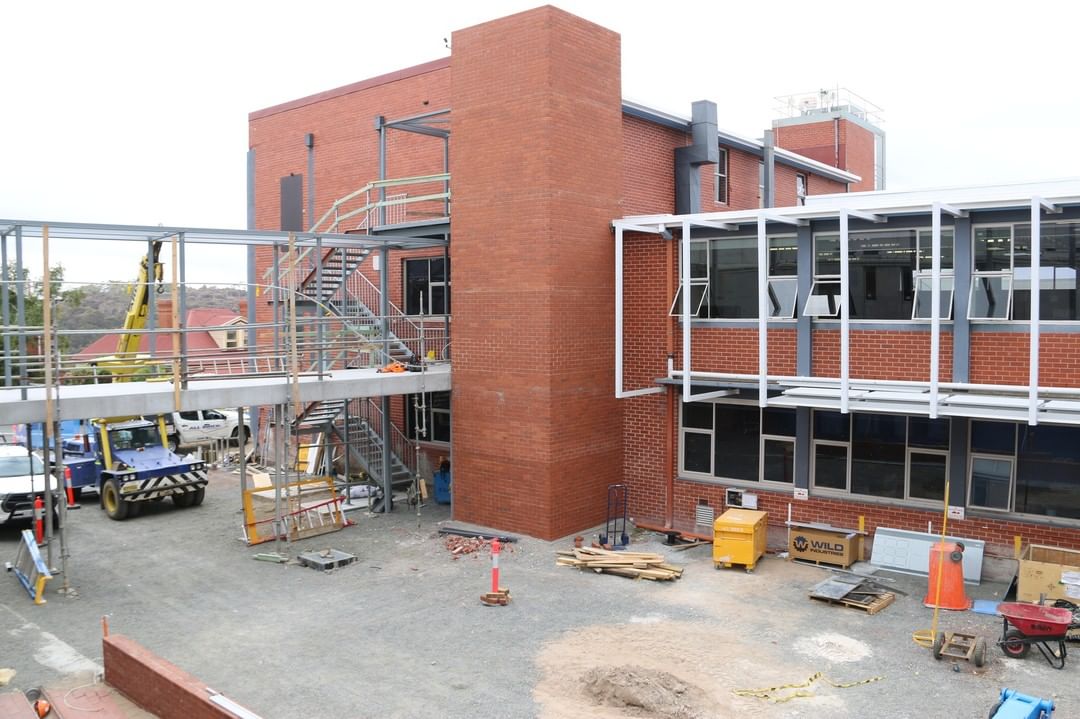
Nearing completion: The new Sports Centre for The Friends’ School in Hobart, designed by H2o Architects with Bence Mulcahy.
On the drawing board: Faraday Street townhouses
Our studio is busy working on the design for an exciting new warehouse-inspired townhouse development in Faraday Street, Carlton.
Nestled within the brick shell of an old motor garage, the project features three townhouses, with a basement, ground and first-floor level that sits above the existing garage.
Taking inspiration from rusty corrugated iron, the paired-back external materials palette features Spanish ceramic tiles, steel-framed glazing and off-form concrete. Featuring existing brickwork and an impressive full height ventilated glazed void through all levels, the interiors are designed with three shell and core spaces to accommodate bespoke fitouts for the new owners.
As part of our team for this project, we’re thrilled to once again be working with builders Jointly and the award-winning Hobart-based structural engineers Gandy & Roberts, who helped deliver the high-profile McKinnon Secondary College Gymnasium.
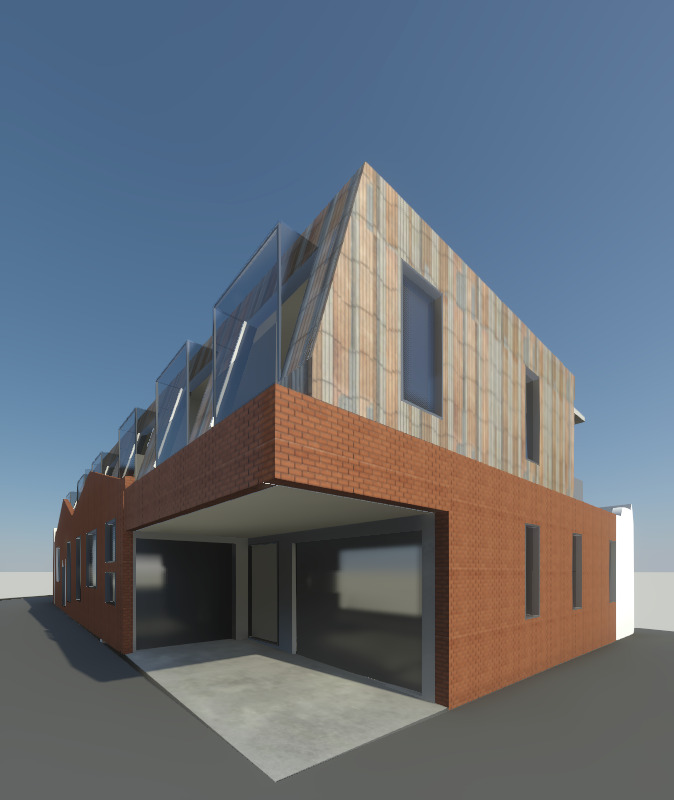
Permits approved: the Faraday Street townhouses development. Set back from the street within an 8m height limit, the project also includes rooftop solar and electric vehicle charging stations.
Hobart ‘Grey’ Besser Blocks
Written by H2o Director Tim Hurburgh, with Nicholas Heyward, historian and current chair of the National Trust of Tasmania, Tim delves into a unique period of Australian architecture in Hobart in the 1960s and early 1970s.
Tim won a 1966 Besser display house competition, which inspired his own early use of besser blocks and, later, this article. Tim’s exploration of Hobart’s besser blocks was also published recently in Architecture and Design.
In May 2021, the 2021 AIA (Tasmanian Chapter) Enduring Architecture award was presented to Brian Walch of Hartley Wilson Oldmeadow Eastman Walch Architects, for the Wilson Robson Building in Liverpool Street Hobart. The award was a milestone in the recognition of a unique period of Australian architecture.
During this time there was a mini explosion in the erection of high-quality buildings of all types and scales in concrete block – mostly standard greys. These were made locally by Besser Vibrapac Masonry at its Lutana factory established in the early 1950s on the edge of the city.
Click here to read the full article.
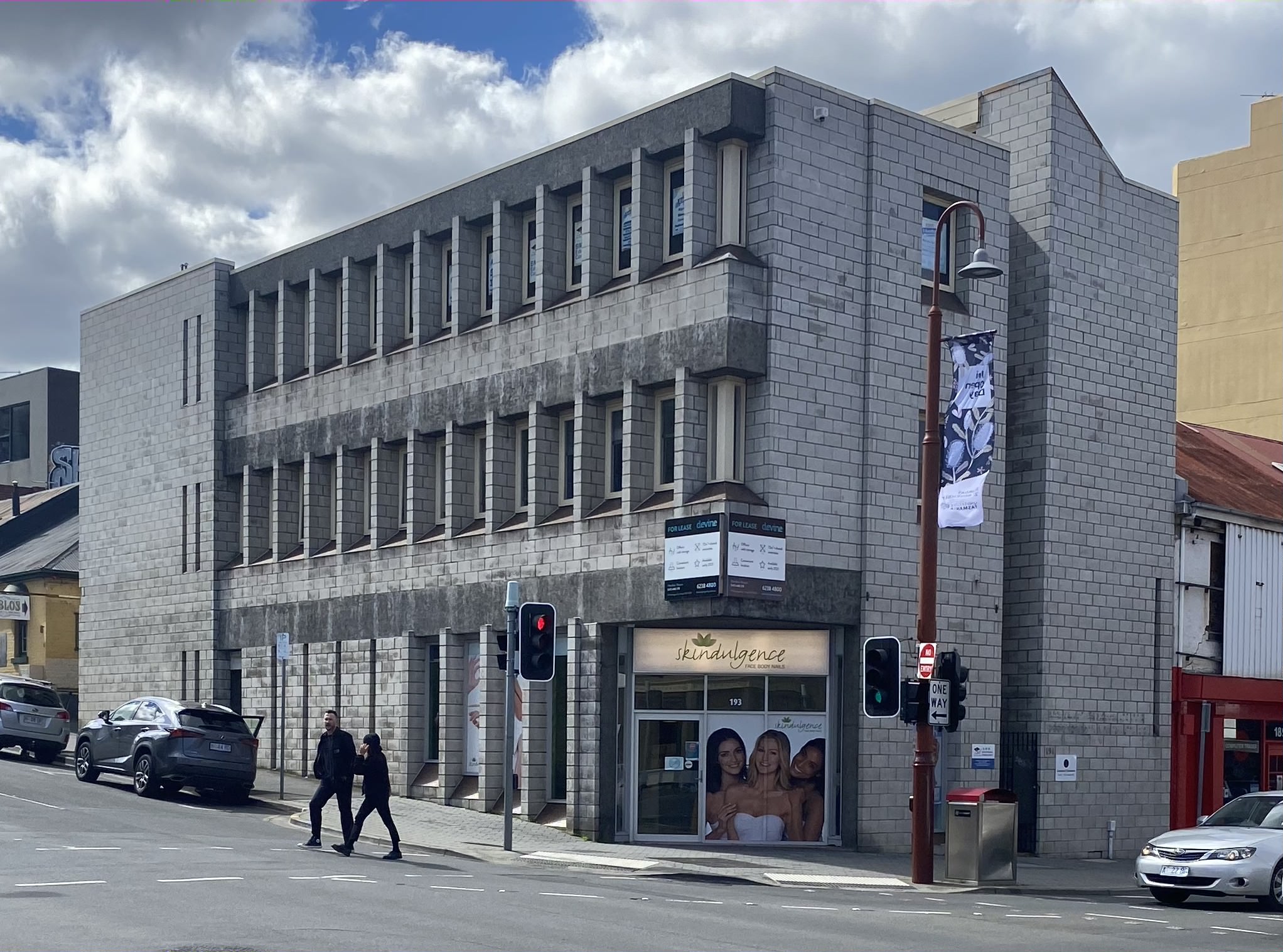
Pictured: The iconic Wilson Robson Building by Brian Walch, completed in 1973. The building can be interpreted as representing both the high point but also the end of an exuberant era of Tasmanian architecture, in Hobart in particular, during the 1960s and early 1970s. Photo by Tim Hurburgh.
Flinders University Biodiversity Facility
Designed in association with Phillips/Pilkington Architects, our new Biodiversity Facility for Flinders University is now complete and open for business. Located at the College of Science and Engineering at the Bedford Park campus of Flinders University in Adelaide, the purpose-built facility supports contemporary teaching and research across biodiversity, nature conservation and education.
With environmental issues at the forefront of global debate, the new Biodiversity Facility plays a vital role in supporting the teaching and learning of conservation and biodiversity. Together with Phillips/Pilkington Architects, we’ve taken the opportunity to highlight the university’s valuable work, and have entered the facility into this year’s South Australian Architecture Awards. Entered into both the Education and Interior Design categories, we look forward to the announcement of the award winners later this year in mid-June.
Designed with a low carbon footprint and reduced energy inputs, the facility incorporates bespoke environmental conditions with a focus on humidity, temperature and light control. The facility also includes landscaped outdoor areas designed to blend with its bushland surrounds in sympathy with the local landscape.
Enhancing the sense of enclosure, a dark colour palette is used as a background for vibrant highlights throughout. Externally, the facility appears rugged, surrounded in earthy tones that ground the new building to its location. Internally, entryways and delivery portals are accentuated with bold colours including turquoise, orange and yellow, taking inspiration from the fish and lizards accommodated in the facility.
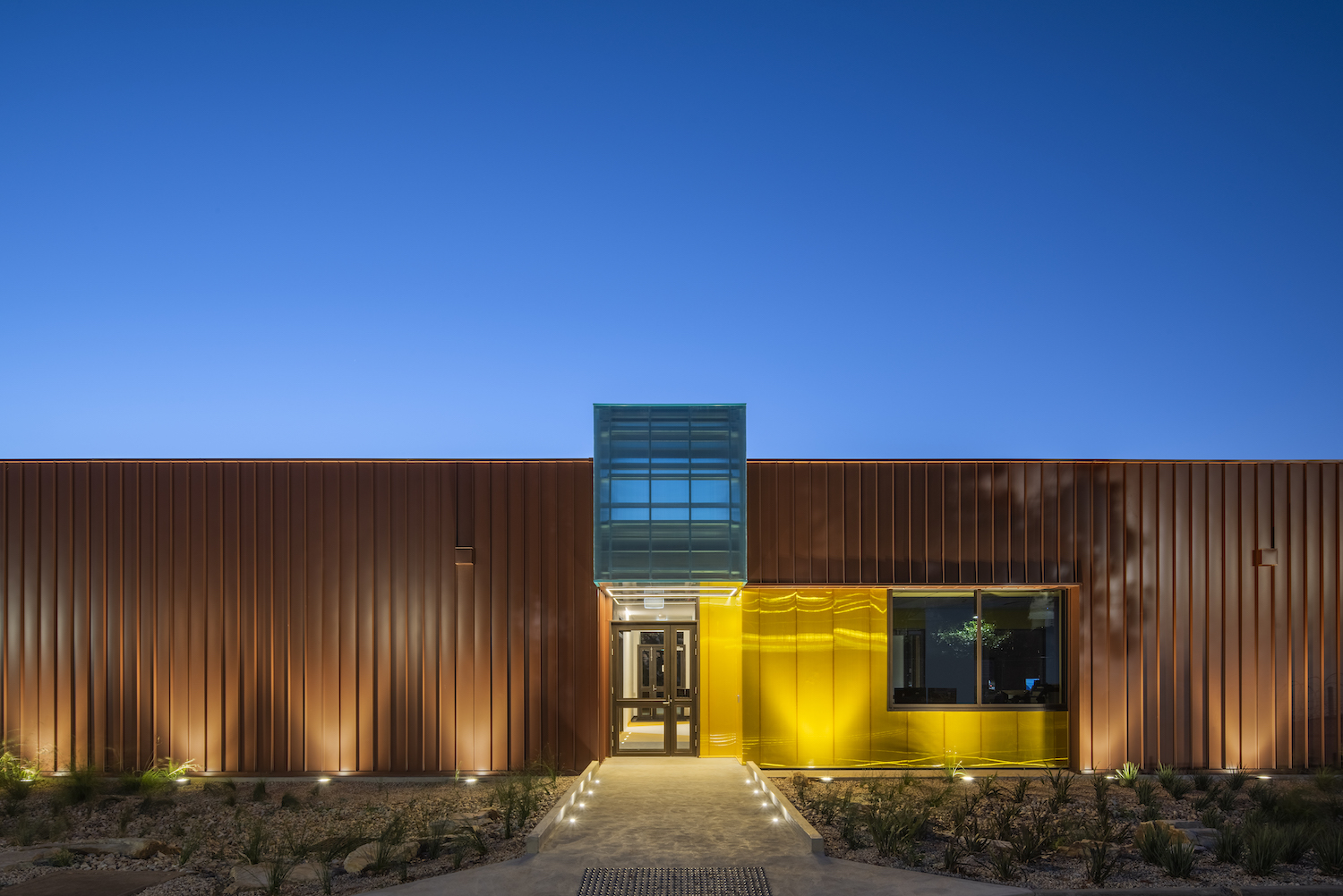
Part of Flinders University’s upgraded science precinct, the new Biodiversity Facility supports the university’s reputation for world-class research and teaching. Photo by David Sievers.
